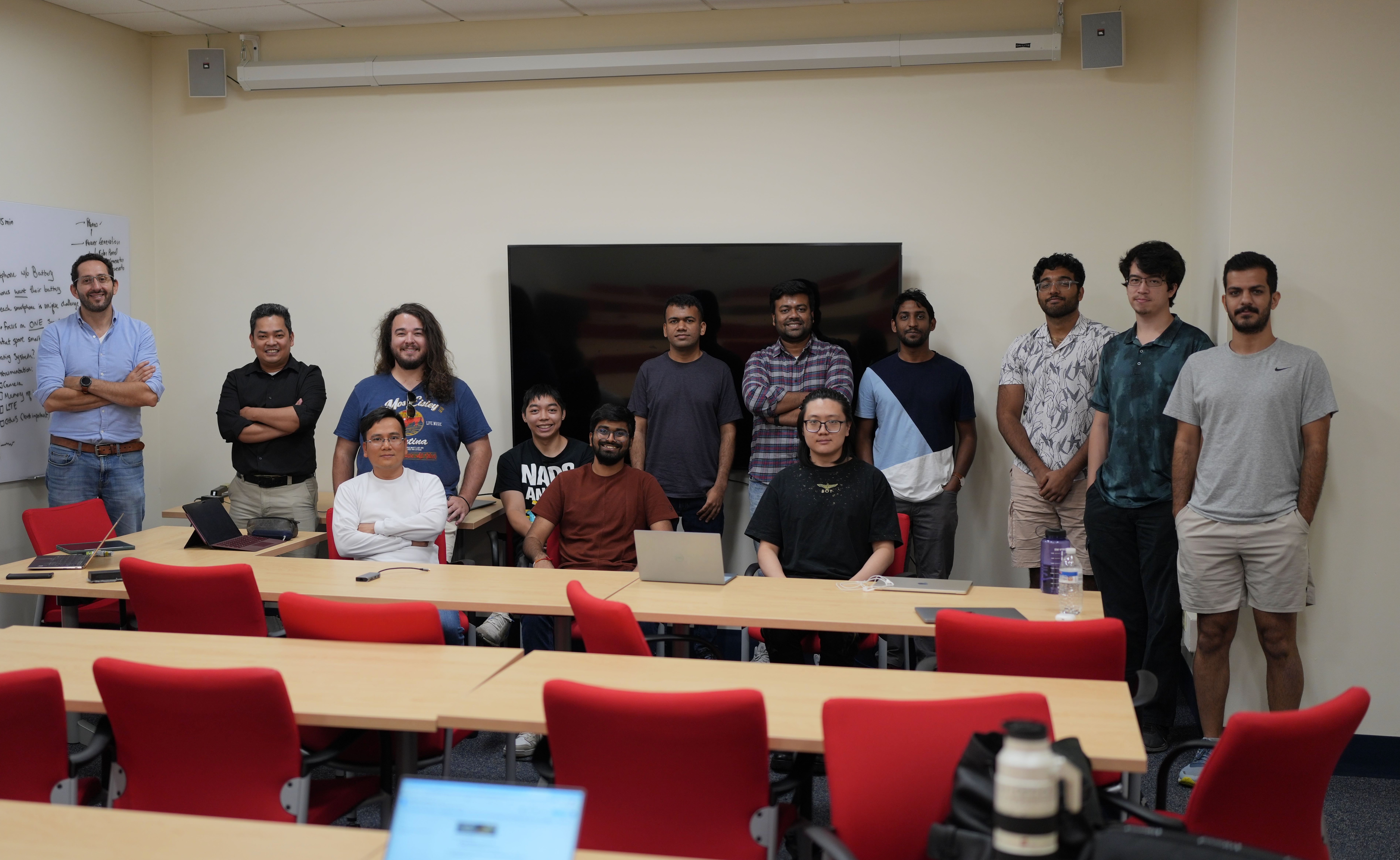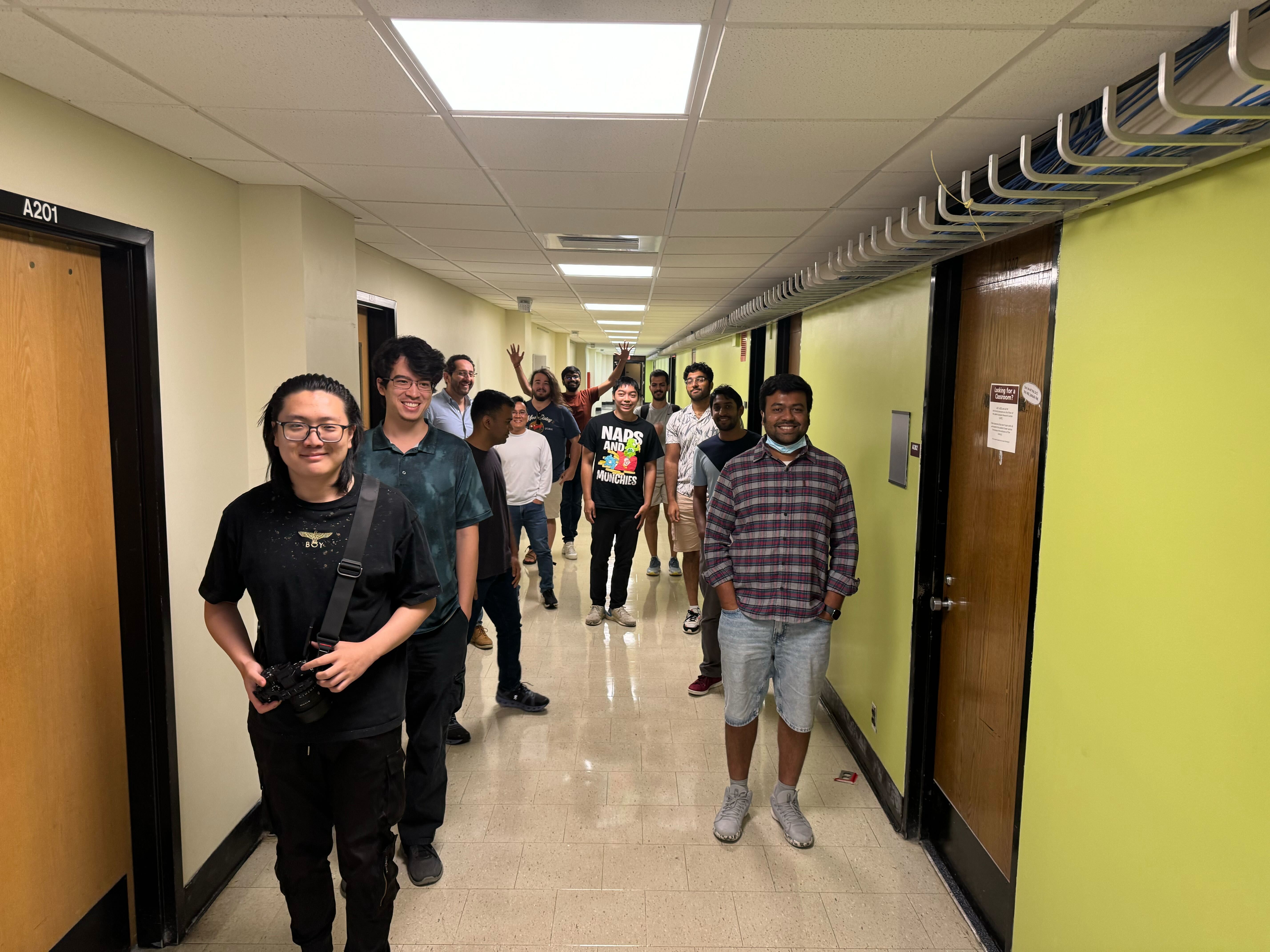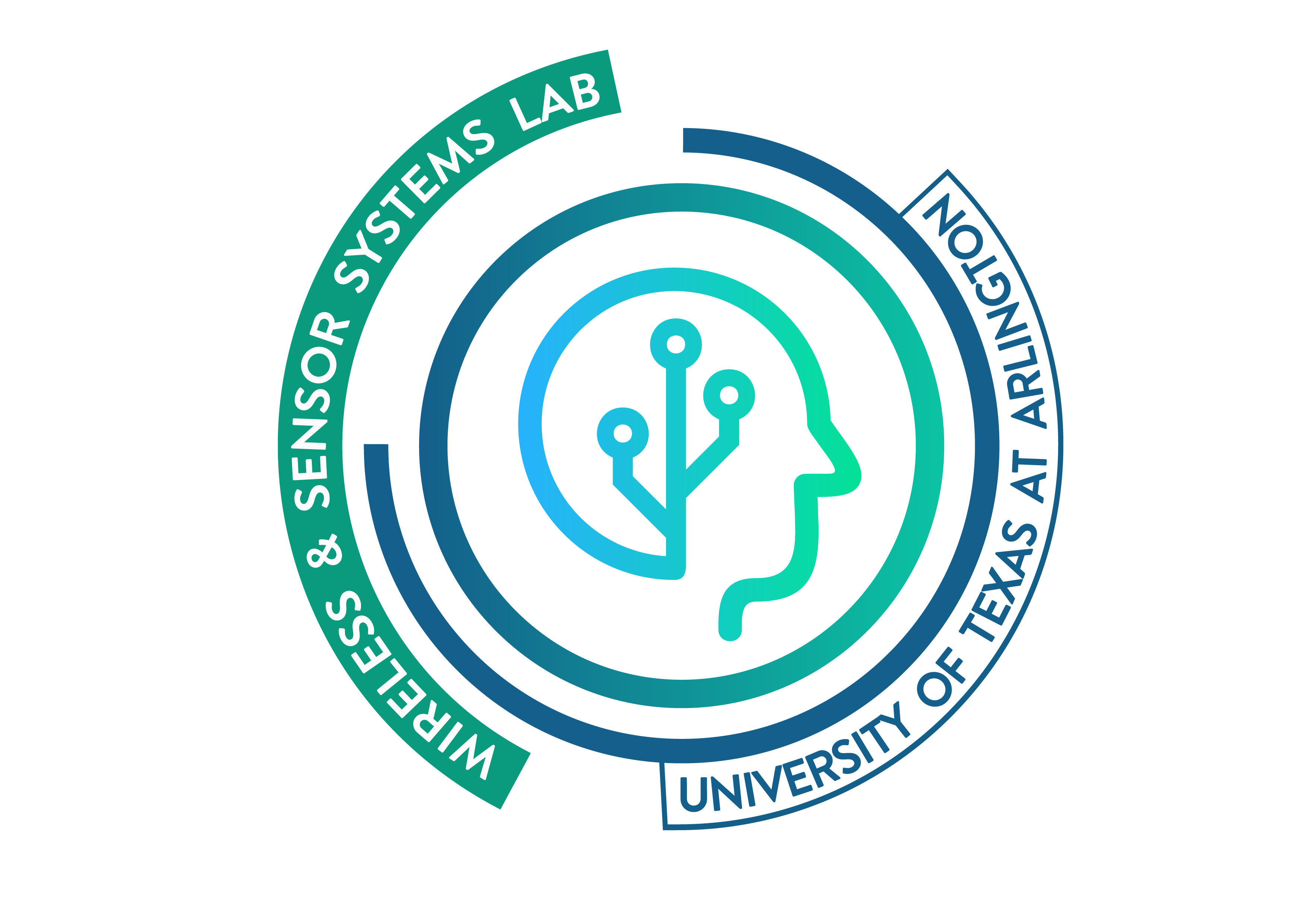About the Lab
WSSL's broad research interests are in the areas of AI-powered mobile/wearable computing and sustainable computing. Our research agenda has focused on Sustainable Autonomous Things (SATs) for the vision of the Internet of Sustainable Medical Things, Internet of Sustainable Living Things, and Internet of Sustainable Flying Things. Our work is interdisciplinary in nature, where we develop new techniques in sensor and sensing system development, algorithms, data analytics, signal processing, hardware, and firmware optimization to invent:
- (1) a new class of medical devices that can continuously and unobtrusively collect novel and important health data in non-clinical settings
- (2) a new class of living sensors that can live with plants/animals
- (3) a new class of unmanned aerial vehicles that requires extremely low maintenance.
- (4) We are also interested in sustainable quantum computing, and with Berkeley Lab, we have made some exciting progress.
News
-
12/2025: Our wearable research on cardiovascular health is awarded $100k Translational Grant Award
-
09/2025: One paper is accepted to ACM SenSys 2026 (Acceptance Ratio 17.4%). Congratulations, team!
-
03/2025: We have two papers being accepted at MobiSys 2025. Congratulations and see you guys in California!
-
03/2025: We will host a workshop on computing for quantum along with MobiSys 2025 in California. The website is live now!
-
02/2025: Our new paper on Battery Free Fixed Wing Unmanned Aerial Vehicle is accepted to Nature SR. Congratulations Jackson and the team!
-
02/2025: Patrick Do was admitted to the computer science PhD program at UMass. Congratulations, Patrick!
-
02/2025: Vu and Aziz recieved scholarships from UMass for system research!
-
02/2025: We have launched Airspace Forensics, a spin-off startup from our research on drone tracking
-
01/2025: Prof. Nguyen serves as Associate Editors-in-Chief for IEEE Transactions on Mobile Computing (TMC)
-
01/2025: Our website now has a brand new look! Check it out!
-
12/2024: Vu officially becomes a research affiliate with the Accelerator Technology & Applied Physics division at Berkeley Lab. Congratulations, Vu!
-
10/2024: Our work on developing an ear-based seizure detection system, which was validated at UTSW Medical Center, is accepted to ACM Health 2024. Congratulations, team!
-
09/2024: Unvoiced paper is accepted to ACM Sensys 2024 (Acceptance Ratio ~18.5%). Congratulations, team!
-
09/2024: Our work on building an open-source platform for real-time qubit data storage and visualization is accepted to Nature Scientific Reports. Congratulations, team!
-
09/2024: Paper on 3D facial animation for authentication is accepted to IEEE Transactions on Mobile Computing. Congratulations, team!
-
07/2024: We lead an NSF CSR award focused on developing implantable and wearable sensors for plant health monitoring.
-
06/2024: We have released a pre-print summarizing our two years of work on building an open-source ML-powered FPGA hardware/software platform for in situ qubit control. We will discuss it at Quantum Week (QCE) 2024. More to come soon!
-
06/2024: Welcome Joseph Vo, Tanvi Kandepuneni, Michael Knox, Joseph Collins, Patrick Do, Gaurav Chandra, Aryan Nair, and Yuqi Liu to the Summer Research Program at WSSL!
-
05/2024: Our dear members Neel Vora and Devanshu Brahmbhatt, graduated. Neel joined Berkeley Lab as a research staff. Devanshu continues his start-up dream. Congratulations!
-
03/2024: Our collaborative A2 pilot study with Neursantys is funded by the National Institute on Aging via MassAITC.
-
02/2024: Prof. Nguyen gives an invited talk at University of Toronto - Dalla Lana School of Public Health.
-
01/2024: IOTeeth is accepted to ACM IMWUT/UbiComp 2024. Congratulations, Amir!
-
01/2024: Our paper is accepted to Journal of Clinical Neurophysiology. Congratulations, Aziz!
-
01/2024: Prof. Nguyen gives an invited talk at ICOIN 2024.
-
12/2023: Prof. Nguyen gives an invited talk at Lawrence Berkeley National Laboratory on ML + FPGA-based research and visits University of California Berkeley.
-
11/2023: Prof. Nguyen gives an invited talk at UMass Chan Medical on earable health.
-
10/2023: Two papers are accepted to ACM SenSys 2023 (Acceptance Ratio ~18.9%). Congratulations, teams!
-
10/2023: Prof. Nguyen gives an invited talk at The Morton Arboretum on the future of Internet of Trees.
-
09/2023: Congratulations Neel Vora for getting an Internship offer from Lawrence Berkeley National Lab. He will be in CA for Fall 2023. Cheers!
-
08/2023: Congratulations Abdul Aziz for acceptance of paper at ACM EarComp 2023 in association with UbiComp/IMWUT 2023.
-
08/2023: Congratulations Jackson Liller for acceptance of Article at GetMobile journal.
-
07/2023: Congratulations team for acceptance of a paper at Cancers journal.
-
06/2023: Congratulations team for acceptance of paper Exploring Batteryless UAVs by Mimicking Bird Flight at ACM DroNet'23.
-
06/2023: Congratulations Neel R Vora for acceptance of paper DroneChase at ACM DroNet'23.
-
06/2023: Congratulations Tasnim Azad Abir for acceptance of paper Towards Robust Lidar-based 3D Detection and Tracking of UAVs at ACM DroNet'23.
-
03/2023: Congratulations Devanshu Brahmbhatt for getting an Internship offer from Lawrence Berkeley National Lab. He will be in CA for Summer 2023. Cheers!
-
01/2023: Jackson Spray joins Lockheed Martin as a Research Scientist. Congratulations, JD!
-
09/2022: Our research is funded by NSF ECCS. Thanks NSF for the support!
-
08/2022: We are running Tutorial on Earable Computing at ACM MobiCom 2022. Please join us in Sydney!
-
07/2022: MuteIt is accepted to ACM UbiComp/IMUWT 2022. Congratulations, team!
-
06/2022: Two papers (IoTree and PROS) are accepted to ACM MobiCom 2022. Congratulations, teams!
-
06/2022: Our workshop paper and demo are accepted to MobiSys 2022.
-
05/2022: Our poster at IPSN 2022 wins Best Poster Award. Congratulations, team!
-
04/2022: Our MobiCom paper is awarded ACM SIGMOBILE Research Highlights 2022. Congratulations, team!
-
04/2022: UCM covers our collaborative research on Dental Health. Visit our demo at IPSN 2022, CPS-IoT Week 2022.
-
03/2022: One poster and one demo are accepted to IPSN 2022.
-
01/2022: UTA covers our Epileptic Seizure Research with UT Southwestern and Oxford.
-
10/2021: UTA covers our recent NSF Award: Building a Better VR Headset.
-
09/2021: Our paper is accepted to IEEE/ACM CHASE 2021.
-
08/2021: Our project is funded by NSF ECCS. Thanks, NSF, for the support!
-
07/2021: We are extremely grateful to receive a set of Jetson Nano Developer Kits from NVIDIA Grant Program.
-
07/2021: Our COVID-19 related paper is accepted to UbiComp (IMWUT) 2021.
-
06/2021: Prof. Nguyen received SONY Faculty Innovation Award. Thanks, SONY, for the support!
-
06/2021: Our paper is conditionally accepted to ACM MobiCom 2021.
-
05/2021: Our microsleep (sleepiness) detection work is accepted to IEEE Transactions on Mobile Computing.
-
03/2021: Hosting ACM DroNet 2021 at MobiSys 2021. Please consider submitting your papers!
-
02/2021: Prof. Nguyen receives University of Texas System Rising Stars Award.
-
12/2020: JawSense paper is accepted to ACM HotMobile 2021. Congratulations, Tanmay and Prerna!
-
12/2020: Prof. Nguyen is invited to serve in TPC of ACM MobiSys 2021.
-
11/2020: Prof. Nguyen serves in Panelists of ACM SenSys/BuildSys PhD Forum 2020.
-
10/2020: eBP is selected for publication in CACM Research Highlights 2020.
-
10/2020: Profs. VP Nguyen and Shijia Pan published a positioning paper on wearable-infrastructure collaborative sensing at ACM BuildSys-DFHS 2020.
-
09/2020: DroneScale paper is accepted to ACM SenSys 2020. Congratulations, Vimal!
-
06/2020: I am looking for self-motivated students to work on research projects in mobile and wearable computing. Check my Notes to Prospective Students if you are interested in joining my lab.
-
05/2020: Lab website is online.
Research Sponsors
We are grateful for the support provided by our research sponsors. Their contributions enable us to continue innovating in our fields of expertise.














